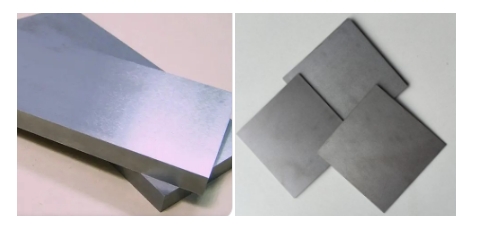- 18
- Dec
Molybdenum lanthanum alloy properties: What is the difference between molybdenum lanthanum (Mo-La) alloy and TZM molybdenum alloy?
Molybdenum lanthanum alloy properties: What is the difference between molybdenum lanthanum (Mo-La) alloy and TZM molybdenum alloy?

What is the difference between molybdenum lanthanum (Mo-La) alloy and TZM molybdenum alloy?
What is a molybdenum-lanthanum alloy? Molybdenum-lanthanum alloy is an alloy composed of base metal molybdenum and lanthanum trioxide present as dispersed particles in the matrix. The content of La2O3 in the alloy is generally 0.5%~5.0% (mass fraction). To
Through the research on the high temperature performance and the corresponding structure of molybdenum-lanthanum alloy and TZM alloy at 1000~1800℃. The results show that when the temperature is lower than 1400℃, the molybdenum-lanthanum alloy has a higher comprehensive performance of strength and plasticity. When the temperature is greater than or equal to 1400℃, the tensile strength of the molybdenum-lanthanum alloy decreases, and the plasticity of the molybdenum-lanthanum alloy also decreases. With the increase of the test temperature, the tensile strength of the TZM alloy decreases, but the plasticity of the TZM molybdenum alloy increases, which is exactly the opposite of the molybdenum-lanthanum alloy.
At the same time, whether it is strength or plasticity, TZM alloy is compared with molybdenum-lanthanum alloy at the same temperature. Microstructure observations show that these two molybdenum alloys begin to recrystallize at 1100℃ and continue to 1550℃, and their recrystallized grains show elongated structure, which is different from the equiaxed grains in the recrystallized state of pure molybdenum.
1. Introduction to molybdenum lanthanum alloy
Molybdenum lanthanum alloy, also known as high temperature molybdenum, brand MoLa, is made of molybdenum doped with a small amount of lanthanum trioxide (La2O3) particles to form a so-called laminated fiber structure. This special microstructure can remain stable even at temperatures as high as 2000°C. Therefore, molybdenum-lanthanum oxide has creep resistance even under extreme conditions of use. We mainly process such molybdenum alloys into high-temperature furnace parts, such as vacuum furnace heat shields, sintering and annealing boats, stranded wires or evaporator coils.
2. Advantages of molybdenum lanthanum alloy:
Higher recrystallization temperature;
The elongated particle structure can improve ductility;
Stronger oxidation resistance;
Higher creep resistance.
3. Recrystallization temperature: 1400℃~1500℃.
4. Resistivity of molybdenum-lanthanum alloy (unit: Ω*mm2/m)
| temperature℃ | 20 | 600 | 1000 | 1200 | 1400 | 1700 | 1800 | 1900 | 2000 |
| Муқовимат | 0.054 | 0.205 | 0.314 | 0.374 | 0.435 | 0.506 | 0.525 | 0.558 | 0.571 |
5、Molybdenum lanthanum alloy composition
| синфи | main ingredient% | (no greater than%) | |||||||||
| Mo | Ti | Zr | C | La2O3 | C | 0 | N | Fe | Ni | Si | |
| Мо 1 | маржа | – | – | – | – | 0.01 | 0.007 | 0.002 | 0.01 | 0.002 | 0.01 |
| TZM | маржа | 0.40 ~ 0.55 | 0.06 ~ 0.12 | 0.01 ~ 0.04 | – | – | 0.03 | 0.002 | 0.01 | 0.005 | 0.005 |
| MoLa | маржа | – | – | – | 0.4 ~ 1.2 | 0.01 | – | 0.002 | 0.01 | 0.002 | 0.01 |
6、Recommended surface load of molybdenum-lanthanum alloy:4~9W/cm2
